Published
on 29
Jan 2025
|
All rights reserved.
|
|
|
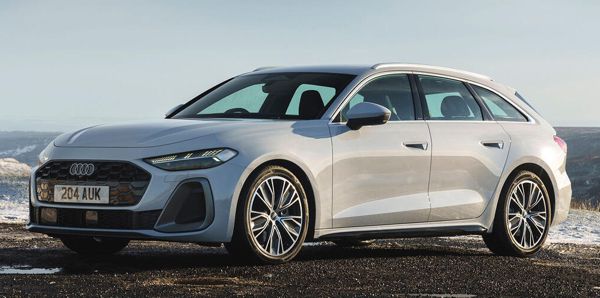
|
|
Running
in parallel to the electric A4, the combustion A5 has to settle with an
evolution of MLB Evo platform.
|
|
Some
history first: Audi’s compact executive car started life in 1971 as
Audi 80. From 1994, it is known as A4. 9 generations of 80 and A4
happened between now and then. From 2007, a sportier variant called
A5 is added to the family tree, mirroring what BMW did to the 3 /
4-Series.
The A5 is available in coupe, cabriolet and Sportback (fastback sedan)
body. In addition to A4 sedan and Avant, you have 5 body styles to
choose from what is essentially the same set of mechanical components.
Besides, there are high-performance derivatives S4, S5, RS4 and RS5.
What a big family!
However, the unusually high diversity also stretches sales of each
model thin. When the market shifts towards SUV crossovers – and Audi
introduced various Q models to capture demand – it is no longer
feasible to sustain so many A4 and A5 variants. The need to migrate to
full electrification in the next decade complicates matter further. In
the end, Audi decides to shrink the range massively. Now the even
number nameplates like A4, A6 and A8 are to be reserved for new EV
models built on the new PPE (Premium Platform Electric) platform, while
conventional ICE-powered models are left with odd number nameplates
like A5 and A7. As a result, the old A4 becomes A5 under the new
nomenclature. The old A5 is discontinued. In an attempt to keep the
buyers of both lines, Audi reshapes the new car to be somewhere between
sedan and Sportback, adopting a 2.5-box shape that includes a
fast-angle hatchback and a tiny tail. Big-selling Avant is kept, of
course, but the 2-door coupe and cabriolet are not. BMW 4-Series and
Mercedes CLE will be happy.
The new A5 is said to be built on PPC (Premium Platform Combustion)
platform, which is shared with the new A7, i.e. the combustion
successor of A6. This is actually a small evolution of the outgoing MLB
Evo platform but renamed to match PPE. Considering the A5 is only an
interim solution and likely to give place to the electric A4 in the
next generation, there is really no need to design a new platform. The
key difference between PPC and MLB Evo is that it adopts a 48V mild
hybrid system to boost fuel economy. Unusually, the latter employs an
LFP (Lithium Iron Phosphate) battery. Besides, Quattro option switches
to the more fuel-efficient Quattro
Ultra system, which works on part-time basis.
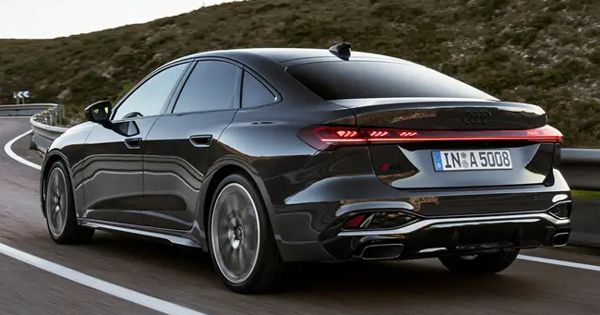
|
|
Switching
to 2.5-box shape might keep the buyers of both A4 and A5.
|
|
Compared with the
outgoing A4, the A5 is larger again, being 67mm
longer and 13mm wider, putting it near the size of an A6 a couple of
generations ago. Its wheelbase has been stretched by a significant
80mm, too, giving the cabin more space for rear passengers.
Nevertheless, boot space is actually down by 15 liters to 445 liters,
and shrinks further to 417 liters for mild hybrid versions whose
battery is placed underneath the luggage compartment and makes the
latter shallower. For comparison, arch-rivals BMW 3-Series and Mercedes
C-class offer 500 and 480 liters, respectively. For those taking a lot
of luggage, Avant is a better bet.
The Avant is also arguably the better looking version, as it hits the
sweet spot between elegance and sportiness. No matter which version,
the new car has a face handsomer than the last A4, thanks to abandoning
the old car’s oversized and edgy single-frame grille with something
smaller and subtler. The body side might lack the flowing waistline of
the outgoing A5, but with slightly pronounced fenders it doesn’t look
as bland as the old A4 either. At the back, the lightbar-style slim
taillights
look more stylish. Overall, Audi’s design might not return to the level
of its peak in the early 2000s, but it is definitely improving.
Inside, showroom appeal is strong, as it is heavy on screen. The large
curved display panel houses both an 11.9-inch instrument display and a
14.5-inch touchscreen, while another display can be added before the
front passenger to keep him/her busy playing games or watching videos.
The system is responsive, and graphics look great thanks to OLED, but
like many Volkswagen group cars its user interface is not the most
intuitive, as icons are small and some functions are buried deep. There
is a physical knob for volume adjustment, but climate control relies
solely on the touchscreen to operate. The touch-sensitive buttons on
steering wheel is also prone to activate audio accidentally.
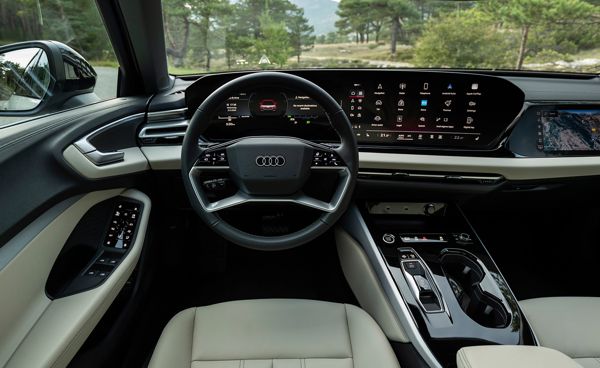
|
|
Cabin
is heavy on screens but less so on quality... |
|
But more disappointing is the materials used. Perhaps Audi felt too
much money is spent to the fancy screens and operating system, cabin
materials got downgraded to more mainstream level, losing the advantage
that the brand has been renowned for since the days of Ferdinand Piech.
The piano-black plastic on center console feels cheap, and is certain
to pick up dirt and fingerprints quickly. The air vents are silver
plastic trims instead of real alloy. On the plus side, LED ambient
lighting saves some grace.
As for space, the driver is expectedly well served, but rear legroom is
boosted the most. Now a 6-footer can sit comfortably behind another
6-footer. That’s for the Avant though, because the sedan’s sloping
roofline limits rear headroom.
The PPC platform still mounts the engine longitudinally ahead of the
front axle, but now a 7-speed dual-clutch gearbox is used instead of
the previous ZF 8-speed automatic across the board. The engine range
has shrunk to only a 2.0TFSI petrol and 2.0TDI diesel, so the new A5 is
strictly a four-cylinder car. The only way to order a V6 is upgrade to
S5, as we shall cover in the next review.
The 2-liter petrol has 3 states of tune: 150hp, 204hp or 272hp. The
former is no more powerful than a 1980s naturally aspirated 2-liter
16V, which is ridiculous for one sporting dual-VVT, Valvelift, direct
injection and newly introduced VTG (variable turbine geometry)
turbocharger. However, most customers are likely to opt for the 204hp
unit which offers just enough performance (0-60 takes 7.4 seconds),
although you do need to work harder on overtaking. The 272hp version
should be punchier, but it is available to only North American market.
Later on, Audi will add plug-in hybrid options based on the 2.0TFSI
engine.
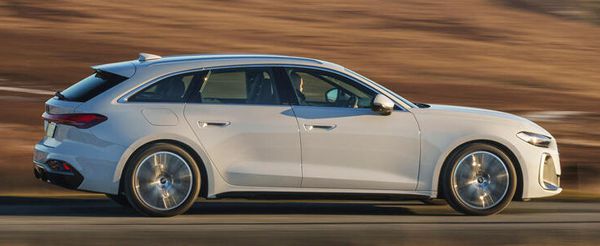 |
|
Driving
dynamics is competent but hardly outstanding.
|
|
Meanwhile, the 2.0TDI produces the same 204hp but more torque. Apart
from some diesel clatters at cold start, it is refined and a good
companion for cruising. It is faster and more frugal, mates with the
mild hybrid system and can be optioned with Quattro – the petrol engine
has neither. The 48V mild-hybrid system employs 2 electric motors – one
ISG and one motor-generator at the transmission output which can supply
up to 24hp and recapture up to 34hp during braking. This benefits not
only fuel consumption but also helps masking turbo lag at lower revs.
Audi is brave to revert from torque converter automatic to dual-clutch
gearbox. It is generally smooth and refined enough not to get
attention, but can be slightly clunky at very low speed.
Likewise, the A5’s ride is generally smooth and refined, but with
S-line suspension and 20-inch wheels it fails to iron
out smaller surface imperfections. A Mercedes C-class is more
absorbent and quieter. Meanwhile, the handling is not in a position to
challenge BMW or Alfa. Its steering is too light and numb to engage
drivers, although direct and accurate enough. The handling feels more
on the safe side, lacking a sense of agility near its cornering limit.
This is not too surprising though, as the car is front-wheel drive and
pretty big and heavy. The braking on mild-hybrid car also fails to
deliver a firm pedal response, compromising confidence.
In short, the new A5 is competent but not very engaging to drive. Its
engines lack firepower and chassis lacks sharp response and agility to
entertain. While comfort and refinement are pretty good if you avoid
S-line trim, they are not class-leading. Audi could have done better,
but I suspect too much resources went to develop its electric sister
car instead.
|
Verdict:    |
Published
on 29
Jan 2025
|
All rights reserved.
|
|
Audi S5
|
|
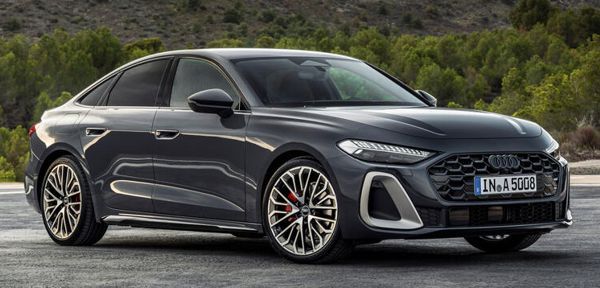
|
|
The
best of the A5 range? Very possibly.
|
|
Compared with its
predecessor S4, the new S5 gets much larger and gains 330kg of weight,
now close to 2 tons! Its powerplant remains to be a turbocharged V6
displacing 3 liters. Moreover, the Quattro system has been switched
from the Torsen C differential unit with 40:60 permanent torque split
to the part-time basis Quattro Ultra system which disconnects the rear
axle in normal situations. All signs point to a pessimistic prediction
of its driver appeal. However, in reality it is not that bad. In fact,
more interesting to drive than the last generation, if not the
V8-powered S4 a couple of generations ago.
Outside, the S5 differs subtly from lesser A5 models. The nose sports a
pair of silver color brake ducts, while the tail features quad-exhaust.
If you expect big spoilers or skirts, you will be disappointed to find
none, as the S5 is supposed to be a wolf-in-sheep Q-car. You might need
to upgrade to RS5 for a more expressive look. Again the S5 is available
in both sedan – now a 5-door hatchback – and Avant body, the latter is
usually more popular.
The S5 (as well as upcoming RS5) is the only model in the new A5 range
to get the service of a V6 engine. It is a development from the
90-degree, reverse-breathing V6 of the old car. As before, it can run
on Miller cycle to save fuel at lighter loads, thanks to using the
Valvelift system to switch to a second set of cam lobes which delays
the closure of intake valves. However, the single turbo rests inside
the V-valley has been upgraded to a VTG (variable turbine geometry)
unit, which boosts low-rpm response and reduces turbo lag. This allows
it to ditch the previous twin-scroll architecture, resulting in quicker
warm up and reduced cold-start emission.
The 48V mild hybrid system introduced to A5 2.0TDI is also present on
the S5. Apart from the usual integrated starter generator, it adds
another electric motor at the transmission output, offering up to 24
horsepower or regenerate up to 34hp under braking. The regenerated
energy is stored in an LFP battery located under the boot floor,
contributing to the increased weight, but also allows the car to
improve front-to-rear weight distribution from the old car’s 57:43 to
56:44. The mild-hybrid system can contribute significantly to fuel
economy, especially in urban driving where braking is applied
frequently.
Like the rest of the A5 range, after a generation switching to ZF
8-speed automatic, the S5 reverts to its own 7-speed dual-clutch
gearbox called S Tronic. Thanks to the electric assistance of
mild-hybrid system, you are unlikely to miss the low-end torque
multiplication of torque converter.
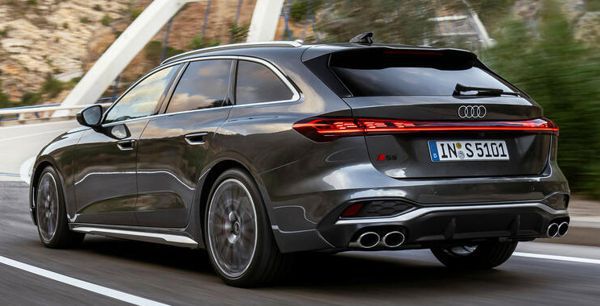
|
|
The
handling balance is surprisingly neutral, even adjustable.
|
|
The updated V6 produces 367 horsepower, up 13 hp from the last
incarnation. Maximum torque is boosted from 369 to 406 lbft, and that’s
before considering the extra low-end push by the mild-hybrid system.
This allows the S5 to sprint from rest to 60 mph in 4.3 seconds,
two-tenths quicker than the old S4 despite carrying substantially more
weight. For most drivers, that kind of performance is more than quick
enough.
On the road, the engine feels noticeably more responsive from lower
revs. The electrical push is seamless, but you do hear a slight
high-pitch noise from the electric motor. Fortunately, this is masked
by the surprisingly musical exhaust note of the V6 at higher revs. In
more relaxed driving, the V6 is as smooth and quiet as an executive car
deserves, so it is a good companion for motorway cruising.
However, the S Tronic DCT is not quite as seamless as the outgoing ZF
automatic. Although the mild-hybrid system’s electric motor helps
filling the torque gap during gearshift, downshifting suddenly could
result in a rougher engagement. There is still no replacement to
hydraulic torque converter for smoothness.
What’s really surprising is the chassis. As always, the S5 is not meant
to challenge its RS sibling for driving thrills. Instead, it is a
balance between driver appeal and everyday ease of driving, perhaps a
bit more inclined to the latter. Therefore, the modifications made to
the suspension is pretty mild. It gets a slightly stiffer and 15mm
lower setup accompanied with standard fitted adaptive dampers, while
20-inch wheels are used as in S line trim of A5. Switching to the
predominantly front-wheel-drive Quattro Ultra system should have
downgraded its driver appeal further, because in principles only up to
50 percent torque can be directed to the rear axle, unlike the old
mechanical Quattro system that always sent 60 percent torque to the
rear. Even though an active rear differential is standard on the S5, it
can just decide how to use that up to 50 percent torque between the
rear wheels.
However, the contrary is found on the road. The new S5 actually feels
more neutral in its handling balance than previous generations.
Although the Audi still doesn’t turn in quite as sharply as BMW M340i,
it resists understeers better than the old S4. With stability control
turned off, you may even induce a bit oversteer or 4-wheel drift in
corner, something the old car could not imagine.
How does it manage such a dramatic shift to neutrality with Quattro
Ultra? Well, apart from how much drive is sent to the rear axle, the
suspension, steering and electronics tuning could also determine the
balance of the car. If you set them up to a slight understeer balance
when the Quattro Ultra drives only the front axle, you have the
possibility of achieving an adjustable balance once the Quattro Ultra
starts sending drive rearward. Even with less than 50 percent drive
sent to rear axle, it is possible to shift the balance from slight
understeer to mild oversteer, especially with an active rear
differential gets into play. In short, it is the adjustability of
Quattro Ultra that prevails over the mechanical Quattro.
The S5 could have been made even more entertaining had it got a better
steering. The variable-ratio rack does not suffer from the usual
artificially heavy weighting of outgoing S-cars, and its response is
precise and consistent, but it delivers little feel to your hands.
The S5’s adaptive dampers succeed in offering good body control in
Sport mode or a supple ride in Comfort, doesn’t suffer from the usually
stiff ride of S-cars. Noise insulation is also very good. It is a great
car for everyday driving yet is able to deliver some driving thrills
when you demand, all the while keeping the all-weather security of
Quattro. The balance between everything is well judged. Surprisingly,
the best of the A5 range is at the top of its family tree.
|
Verdict:     |
|